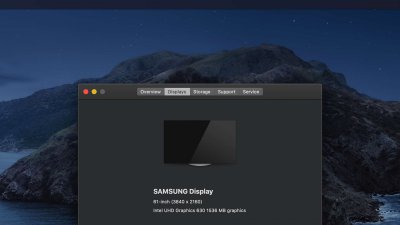- Joined
- Oct 5, 2019
- Messages
- 1
- Motherboard
- OptiPlex 3070 - 0P99M4
- CPU
- i3-9100
- Graphics
- HD 630
- Mac
- Mobile Phone
Hi community, please if someone can help
here's a total noobie @ Hackintosh world and have been stuck couple days in enabling properly the Intel UHD 630
-----------------------------------------------------
Hardware - Dell Optiplex 3070 SFF
Intel i3-9100 with UHD 630
Motherboard 0P99M4 - 1 DP & 1 HDMI(display's connected to it)
4GB RAM
-----------------------------------------------------
MacOS Mojave 10.14.6 was successfully installed and pc only gets screen when injecting IntelGraphics + FakeId 0x12345678
The latest version of Lilu and WhateverGreen are patched to the system. Below are my EFI and screenshot taken just before the display turns black and gets stuck when booting.

here's a total noobie @ Hackintosh world and have been stuck couple days in enabling properly the Intel UHD 630

-----------------------------------------------------
Hardware - Dell Optiplex 3070 SFF
Intel i3-9100 with UHD 630
Motherboard 0P99M4 - 1 DP & 1 HDMI(display's connected to it)
4GB RAM
-----------------------------------------------------
MacOS Mojave 10.14.6 was successfully installed and pc only gets screen when injecting IntelGraphics + FakeId 0x12345678
The latest version of Lilu and WhateverGreen are patched to the system. Below are my EFI and screenshot taken just before the display turns black and gets stuck when booting.


